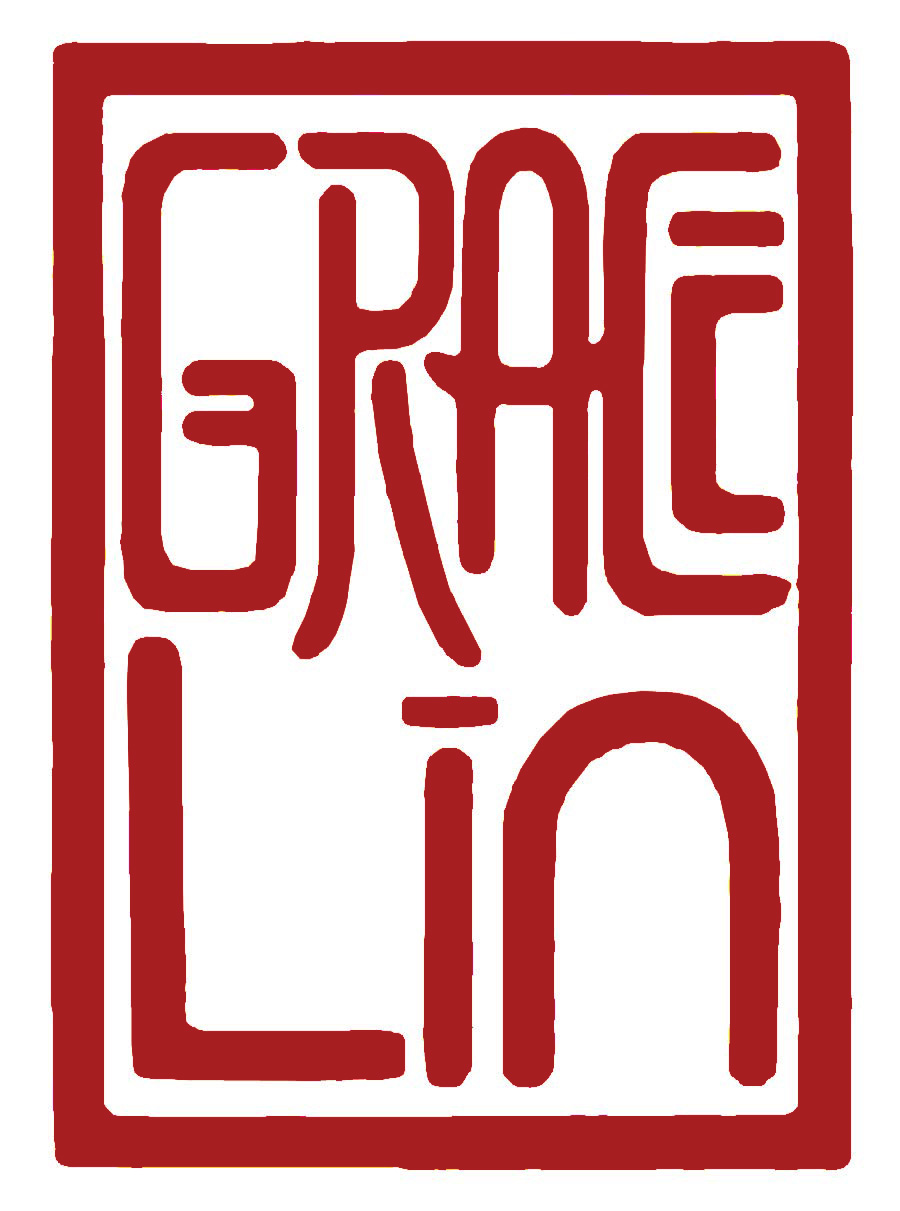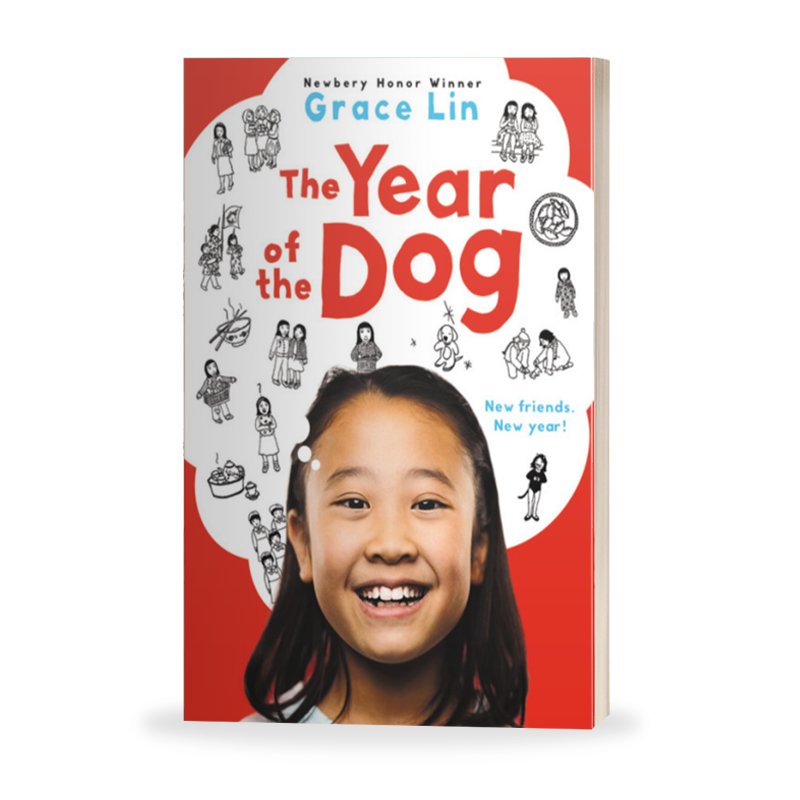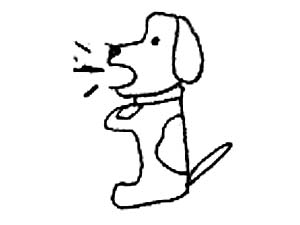The Year of the Dog
Grace’s first middle grade novel!
This exhuberant novel follows a young girl’s adventures during the Chinese Year of the Dog. As Pacy celebrates with her family, she finds out that this is the year she is supposed to “find herself.” As the year goes on, she struggles to find her talent, makes a new best friend, and discovers just why the Year of the Dog is a lucky one for her after all. Universal themes of friendship, family, and finding one’s passion in life make this novel appealing to readers of all backgrounds. This funny and profound book is a wonderful debut novel and has all the makings of a modern classic.
Awards
• 2006 Fall Publisher’s Pick
• Starred Booklist Review
• 2006 ALA Children’s Notable
• 2006 Asian Pacific American Librarian Association Honor
• 2006 National Parenting Publications Awards (NAPPA) GOLD Winner
• 2007-2008 Texas Bluebonnet Award Masterlist
• 2007 Nene Awards Recommended List (Hawaii’s Book Award Chosen by Children Grades 4-6)
• 2007 Cochecho Readers’ Award List (sponsored by the Children’s Librarians of Dover, New Hampshire)
• NYPL 100 Titles for Reading and Sharing 2006
• Kirkus Best Early Chapter Books 2006
• 2006 Booklist Editors’ Choice for Middle Readers
• Cooperative Children’s Book Center Choice 2007
• Boston Authors Club Recommended Book
• 2007-2008 Great Lakes Great Books Award nominee
• 2007-2008 North Carolina Children’s Book Award nominee
• 2007-2008 West Virginia Children’s Book Award nominee
• 2009 Beverly Cleary Children’s Choice Award (OR) nominee
•2009 Pacific Northwest Young Readers Choice Award (WA, OR, ID)nominee
Reviews
From IMDiversity.com
One of my first Asian American “Ah ha!” moments came when reading Maxine Hong Kingston’s “Woman Warrior” the scene where she wonders why people think that Chinese American girls are nice and quiet, when Chinese women are so bossy and loud. She describes Cantonese women eating and gesturing and talking loudly in very guttural Cantonese in restaurants. Suddenly something clicked in my head. I had also always struggled to live up to the nice and quiet Chinese girl image, while my six aunties and six great aunties are certainly nothing if not bossy and loud, every last one of them bossier and louder than the next (and we don’t even speak Cantonese). No delicate cherry blossom Madame Butterfly types here. Without a friend or a book to note the obvious, however, I had completely missed that contradiction that was right in front of me my whole life.
Grace Lin’s debut novel, The Year of the Dog, part memoir part fiction, is another book full of these “Ah ha!” moments that both our children and we will appreciate. The book is written for an elementary to middle school audience, but the adventures and questions of these plucky second-grade characters will resonate with us all. Author Grace Lin writes that this is the book she wished she had had when she was growing up. I wish I had had it, too.
These days there are more and more APA picture books, historical APA books, and APA middle/high school coming-of-age novels on the market, but I think there is a still a real paucity of books for those children who can already read by themselves (about second to sixth grades) but are not quite ready to learn about the harsh realities of racism, bullying, popularity, and dating. (There is Lensey Namioka’s series of books about the irrepressible Yang family learning to adjust to life in America, Lawrence Yep’s The Imp that Ate my Homework and Chinatown Mysteries series, and Lisa Yee’s Millicent Min Girl Genius.) This is the perfect book for that age group. (My first, fourth, and sixth graders all highly recommend it, and they never enjoy the same books.)
In The Year of the Dog, many identity issues are handled with humor, grace and ease. The main character is not rebellious or traumatized or tortured (except by her older sister), but she does wonder aloud about a lot about things. She tries to make sense of situations that we have all been through showing our children that they are not the only one,like being mistaken for the one other Chinese girl in school, deciphering seemingly crazy family customs (and family members), being forced to go to Chinese family camp to make Chinese friends, trying to figure out the difference between being Chinese and Taiwanese, and trying to understand why there are no Chinese American characters in books or plays.
Parents will appreciate that the mother is written with wisdom and calm,meaning not crazy, full of stories that show that even though she grew up in Taiwan, she understands her child’s experience in America. The father is funny and written with good humor. Both parents are smart, easy-going, English-speaking, middle-class professionals.
The story also features two,count them, TWO!,Chinese-American protagonists and their families, both of which are very different,again showing our children that not all Chinese Americans are alike, one child speaks Chinese and the other does not; one mother can cook and the other cannot; one child is in the orchestra and one child is in the school play. One child is slightly “more Chinese” than the other, but they learn and figure things out together.
The book is also really laugh-out-loud funny! The writing is easy and colorful and obviously written by an artist: “After the book project was over, the days disappeared like dumplings on a plate. The sun shone with the yellow of summer and the wind blew a breeze that felt like it came from an oven.” The pages are also punctuated with Grace Lin’s delightful line drawings including instructions on “How to Draw a Dog.”
Everyone simply must read this book!
Frances Kai-Hwa Wang
From Publisher’s Weekly
Lin, best known for her picture books, here offers up a charming first novel, an autobiographical tale of an Asian-American girl’s sweet and funny insights on family, identity and friendship. When her family celebrates Chinese New Year, ringing in the Year of the Dog, Pacy (Grace is her American name) wonders what the coming months will bring. Her relatives explain that the Year of the Dog is traditionally the year when people “find themselves,” discovering their values and what they want to do with their lives. With big expectations and lots of questions, the narrator moves through the next 12 months trying to figure out what makes her unique and how she fits in with her family, friends and classmates. Pacy experiences some good luck along the way, too, winning a contest that will inspire her career (Lin’s fans will recognize the prize submission, The Ugly Vegetables, as her debut children’s book). Lin creates an endearing protagonist, realistically dealing with universal emotions and situations. The well-structured story, divided into 29 brief chapters, introduces traditional customs (e.g., Hong Bao are special red envelopes with money in them, given as New Year’s presents), culture and cuisine, and includes several apropos “flashback” anecdotes, mainly from Pacy’s mother. The book’s inviting design suggests a journal, and features childlike spot illustrations and a typeface with a hand- lettered quality. Girls everywhere, but especially those in the Asian-American community, will find much to embrace here. Ages 8-12. (Feb.)
From Booklist
Gr. 3-5. When Lin was a girl, she loved the Betsy books by Carolyn Hayward, a series about a quintessentially American girl whose days centered around friends and school. But Lin, a child of Taiwanese immigrants, didn’t see herself in the pages. Now she has written the book she wished she had as a child. Told in a simple, direct voice, her story follows young Grace through the Year of the Dog, one that Grace hopes will prove lucky for her. And what a year it is! Grace meets a new friend, another Asian girl, and together they enter a science fair, share a crush on the same boy, and enjoy special aspects (food!) of their heritage. Grace even wins fourth place in a national book-writing contest and finds her true purpose in life. Lin, who is known for her picture books, dots the text with charming ink drawings, some priceless, such as one picturing Grace dressed as a munchkin. Most of the chapters are bolstered by anecdotes from Grace’s parents, which connect Grace (and the reader) to her Taiwanese heritage. Lin does a remarkable job capturing the soul and the spirit of books like those of Hayward or Maud Hart Lovelace, reimagining them through the lens of her own story, and transforming their special qualities into something new for today’s young readers.
From The Asian Reporter
What does it mean when it’s the Year of the Dog?” asks Pacy, the narrator of Grace Lin’s first novel, as she teaches her little sister how to draw a dog while her mother and big sister prepare the Chinese New Year dinner. “Well, in the Year of the Dog you find your best friends,” answers big sister Lissy. Mom adds, “Since dogs are also honest and sincere, it’s a good year to find yourself.”
Turns out that Pacy finds even more than she had hoped for, and The Year of the Dog is a wonderful, “mostly true” autobiographical novel by the author and illustrator of seven books for children, including The Ugly Vegetables, which plays an important part in this novel.
While Pacy’s friendships and quest to figure out what she wants to be when she grows up are at the center of The Year of the Dog, there are also a number of amusing and enlightening family stories, including “How Grandpa Got Rich,” “The Paper Piano,” and “Uncle Shin and the Special Cake.”
Pacy’s family will keep you in stitches. Lissy tells Pacy that she didn’t deserve a Red Egg party because she was “the worst baby.” They had to put a tube on your ankle and put you in a plastic box.” When Pacy wants to know if Mom will cry if she wins a book contest, the way Pacy’s grandmother cried when Pacy’s mother played a piano solo, Dad quips, “We’ll all cry! I’ll buy a box of Kleenex just for the occasion.”
Grace Lin’s black and white illustrations are just right. They all have captions, and include not only scenes from the story but a school lunch, how to color an egg red, and a mean girl’s drawing of a Twinkie. She knows how to turn a phrase, too. Here’s how Pacy describes early spring: “The snow had melted away for good and had left everything smelling like a wet towel.”
Did you know that, on Chinese New Year, “the longer you stay awake, the longer your parents’ lives will be?” Were you aware that only women are supposed to eat yellow ginger and chicken soup? Have you seen Chinese vegetables that look like “warty frogs” and “purple sausages?”
In an author’s note following the story, Grace Lin explains that she wrote this book “because it was the book I wished I had had when I was growing up, a book that had someone like me in it.”
“The Year of the Dog had been a great year,” Pacy realizes as she prepares to greet the Year of the Pig. The Year of the Dog is a great read. Josephine Bridges,V16, #4 (January 24, 2006), page 15
Dennis and Lynn Baker, Members FCC Oregon-SW Washington
This is a story about fitting in, finding your own strengths, learning who you are, and really liking yourself. It’s told in a cheerful, encouraging tone, without leaving out the hard parts. Grace’s search for her special talent will resonate especially with older elementary school students. Kids who enjoy Beverly Cleary will have fun reading about Grace’s daily adventures at school, with friends and at home.
Along the way, there are gentle lessons in the different ways that Grace’s and Melody’s parents adapt their cultural strengths into American culture, and in the ways Grace and her parents deal with prejudice from both sides — Caucasian school mates or Chinese-speaking Asians.
It’s a charming story. Enjoy!
Reading level: 6-12
Pages: 134 pages
Publisher: Little, Brown &Co. (Feb. 2006)
Language: English
ISBN: 0316060003
Behind the Story
The Year of the Dog began as a sequel to Grace’s beloved book The Ugly Vegetables. However, as Grace began to write, the book would just not fit in a picture book format. There were so many memories–funny stories that needed to be told, poignant stories that couldn’t be left out, family stories that insisted on being written…they just couldn’t be contained in 32 pages. Finally, Grace realized that it wanted to be a novel and let it become The Year of the Dog!
The book is fiction, but almost everything had a real life inspiration. Here are some of the things that are true! Do they surprise you?
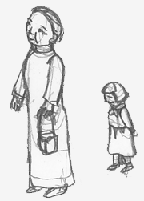

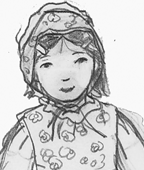

Grace as a munchkin: in the book and in life
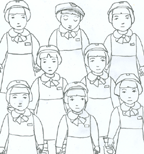
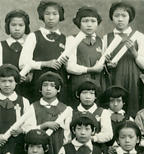
Mom in school: in the book and in life
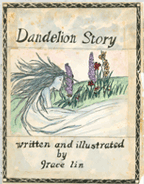
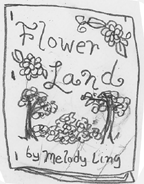
Book contest: Melody’s book is really Grace’s book in life
Activities:
The Year of the Dog
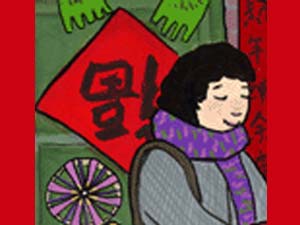
Craft: Make a New Year Banner
Make special decorations to welcome in the Chinese New Year just like in "The Year of the Dog" and "Bringing in the New Year". Using red construction paper, black and gold paint, and Grace's instructions, have students make their own New Year banners with Chinese calligraphy. Explain calligraphy and Chinese New Year's customs to the students.
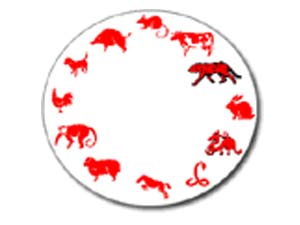
Lesson Suggestion: Chinese Horoscopes
In the book, Pacy is fascinated by the symbolism of the Year of the Dog. Have students research the Chinese horoscope and read about the personality traits for the year she or he was born in. Have students discuss and then write a persuasive essay agreeing or disagreeing with the horoscope descriptions of themselves. Also visit: China Today's Zodiac Page
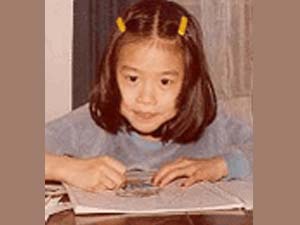
Lesson Suggestion: Memoir Writing
Much of The Year of the Dog is based on Grace's personal experience. Discuss writing from life with the students and have them write their own memoirs from the past year. This can be combined with book making, also a subject in The Year of the Dog. Give students the opportunity to develop an understanding of who they are and where they come from, and how this is connected to the past and future, the near and far away. A memoir study focusing on time, such as a certain year, as a theme can provide this opportunity.
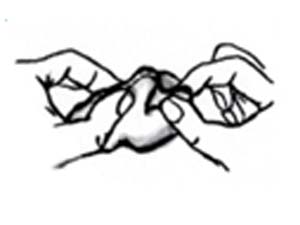
Recipe: Make Dumplings!
Make yourself some "get rich" dumplings using Grace's mother's own recipe.
